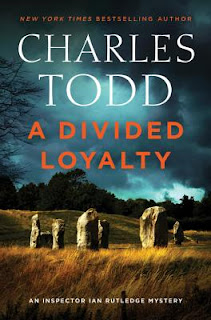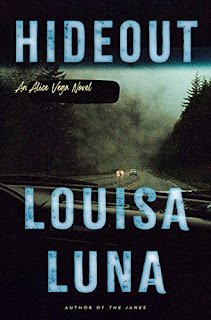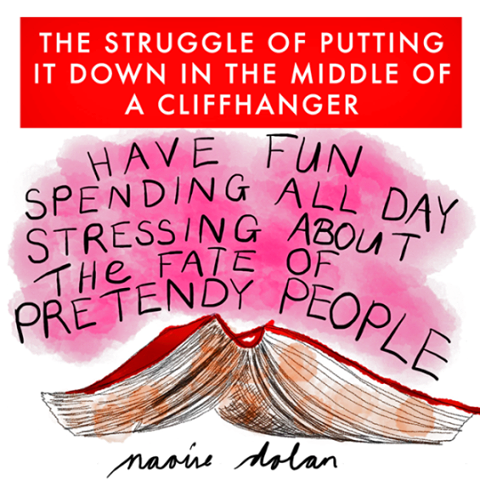I began reading this series with the first book years ago, but have missed many recent adventures. Fortunately, the books can be read as standalones. A historical mystery series featuring Scotland Yard detective Ian Rutledge, the series begins shortly after WWI when Rutledge returns to Scotland Yard.
Search This Blog
Wednesday, February 23, 2022
A Divided Loyalty by Charles Todd, The Wilderwomen by Ruth Emmie Lang, and Carville's Cure: leprosy Stigma, and the Fight for Justice by Pam Fessler
Saturday, February 19, 2022
Finders Keepers and End of Watch by Stephen King; Hideout by Louisa Vega
During February, I finished listening to Finders Keepers and to End of Watch by Stephen King. I didn't like Finders Keepers as much as Mr. Mercedes, although it was a good mystery/thriller. I think this was because, as the second book in the trilogy, I expected Bill, Holly, and Jerome to be a larger part of the book, and they didn't appear at least have way through. My expectations were more at fault than the book, and the characters were well drawn and believable. Although I read End of Watch in 2016 (my first ever book by King), I went ahead and got the audio version because I knew I'd forgotten much of it, and I could listen while doing other things. Will Patton does an excellent job on the narration, but there were so many characters! All of the female characters had the same speech patterns and intonations.
While Mr. Mercedes and Finders Keepers are crime thrillers, End of Watch introduces a supernatural element.
Zeb Williams became a cult figure and while initially there were occasional supposed sightings, thirty years later, no one knows if he is alive or dead.
Wednesday, February 16, 2022
At Home on An Unruly Planet: Finding Refuge on a Changed Earth by Madeline Ostrander
At Home on an Unruly Planet by Madeline Ostrander discusses the effects of climate change on our sense of home, community, tradition, and history. As it is often difficult to follow all the dominoes that have been set off by a warming planet, Ostrander looks at a few places specifically to illustrate the larger picture.
Saturday, February 12, 2022
The Raven Spell by Luanne G. Smith, Between Kings by W.R. Gingell, Mr. Mercedes by Stephen King
Saturday, February 05, 2022
Dust Bowl Girls: The Inspiring Story of the Team that Barnstormed its Way to Basketball Glory by Lydia Reeder; The Self-made Widow by Fabian Nicieza; Best Served Cold by David J. Gatward
Still catching up on January book reviews.
In the early 1930's Coach Sam Babb went on a search to recruit girls for the basketball team at Oklahoma Presbyterian College. Girls basketball was big in rural Oklahoma, and Sam Babb offered farm girls the opportunity to continue playing and get a college education--something most of these girls never dreamed possible.The girls Sam Babb recruited were used to hard work; they fed the animals, planted and harvested crops, learned to drive early in order to further aid their farming families, had outdoor toilets in many cases, and no spare money during the depression and the early years of the drought that was turning their state into a dust bowl.
An education, a dorm with indoor plumbing, and the chance to play basketball provided an opportunity none of them had expected, and the recruits were eager to take advantage of that opportunity.
Primary and secondary sources of interviews with some of the remaining team, letters, journals, scrapbooks, and newspaper articles give insight into these young women who loved the game and were willing (not necessarily eager) to undergo the strenuous practices and keep up with their college courses.
A little slow at first, but then Lydia Reeder's story of the barnstorming season that led to the 1932 AAU championship captures the inspiring story of the girls and their one-legged coach and hauls you cheering from Durant, OK through Dallas, Houston, and Galveston, TX; through tiny towns like Castor, LA, and the small city of Shreveport, La to Eureka Springs, Ark.
Aside from the continuous shortage of funds plaguing the OKC Cardinals, President Herbert Hoover's wife was actively campaigning against competitive sports for women (with a special distaste for women's basketball) and many colleges had eliminated their popular girls' teams. I was unaware of this organized campaign that thought competitive sports too strenuous and too "rough" for young women. Oh, and Lou Hoover was also totally against women competing in the Olympics.
Doll Harris, Lucille Thurman, and other members of the OKC Cardinals had mostly grown up on farms or ranches and were in no way incapable of the demands of the basketball court. In 1932, their final match was with the Golden Cyclones led by the Cyclones star player--Babe Didrikson, who later that year went on to win 3 gold medals in track and field at the 1932 Olympics . Mrs. Hoover be damned. :)
Dust Bowl Girls proved more captivating than I expected. I thought it would be interesting because I find the 1930's and the dust bowl fascinating, but when I found myself wishing I'd been in the stands for some of their games...that was more than I expected!
Algonquin Books. nonfiction. 2017. Print length: 304 pages.
from description: From the cocreator of Deadpool and author of Suburban Dicks comes a diabolically funny murder mystery that features two unlikely sleuths investigating a murder that reveals the dark underbelly of suburban marriage.
I'm not sure what I thought of The Self-Made Widow. There were, after I began to finally get a grip on the characters, some amusing and satiric elements, but I didn't find it "diabolically funny."
Andrea (Andie) Stern and Kenny Lee, college friends who were successful in solving an important crime, have another crime to involve them. Kenny, a journalist, won a Pulitzer for his articles about their college crime-solving, but he has not lived up to his promise. Andrea, married with five kids, has begun to find the domestic situation exhausting and less rewarding than if she had joined the FBI as a profiler as originally planned. The two got back together in the first book in this series and once again they are finding crime solving as interesting and invigorating as before.
Currently, one of Andrea's friends has become a widow. At first sympathetic, Andrea begins to wonder if Molly's husband actually died of a heart attack...or was helped along by Molly?
NetGalley/Penguin Group
Mystery. June 21, 2022. Print length: 400 pages.
The second in the Harry Grimm series set in the Yorkshire Dales. I thoroughly enjoyed the first book and liked this one as well.Wednesday, February 02, 2022
Crowbones by Anne Bishop, The Dying Day by Vaseem Khan, and The Adventures of Dillon Heilberg's Crismis
I am still a month behind in reviewing. More from January.
I fell for Anne Bishop's world of The Others in 2016 and have read them all since then. Written in Red, the first book was published in 2013. The rebellion of "Humans First and Last" was a sort of prescience of the Maga movement.
























